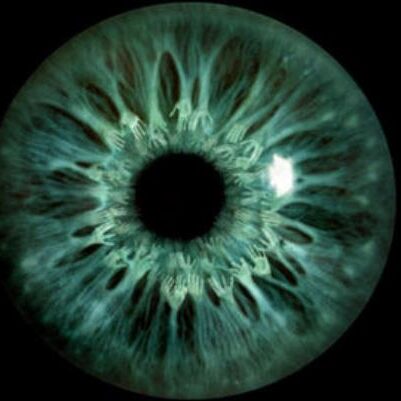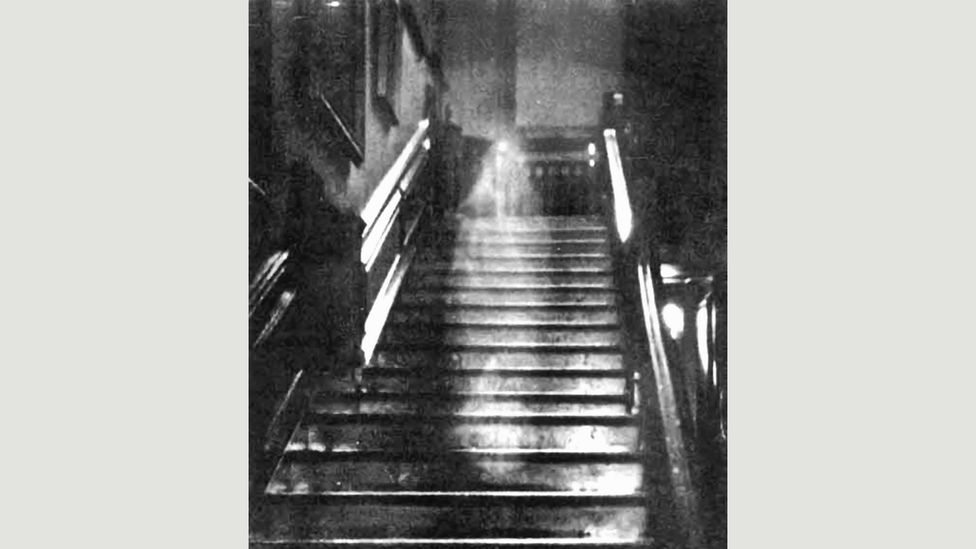In this article, we’ll explore the fascinating world of paranormal hoaxes and debunk some well-known cases. From famous ghost photographs to alien encounters, we’ll uncover the truth behind these mysterious claims. By the end, you’ll have a better understanding of how these hoaxes were perpetrated and the impact they had on popular culture. Let’s separate fact from fiction and uncover the secrets behind these famous paranormal hoaxes!
Get The Scoop On Famous Paranormal Hoaxes
The Cottingley Fairies
History of the Cottingley Fairies
In the early 20th century, the world was captivated by the story of the Cottingley Fairies. It all began in 1917 when Elsie Wright, 16, and her cousin Frances Griffiths, 10, claimed to have photographed fairies near their home in Cottingley, England. These photographs sparked a sensation and ignited belief in the existence of fairies.
The Photographs
The Cottingley photographs captured the attention of many, including prominent figures like Sir Arthur Conan Doyle, the creator of Sherlock Holmes. The images depicted the young girls playing with fairies in a garden, implying that these mythical creatures were real. The photographs were seen as evidence of the supernatural world bleeding into our reality.
Reveal and Aftermath
However, as time went on, skepticism started to creep in. In the early 1980s, Elsie and Frances admitted that the photographs were cleverly staged, using cardboard cutouts of fairies. Their intention was not to deceive the world, but rather to have a bit of fun. The Cottingley Fairies became one of the most famous paranormal hoaxes, reminding us to approach claims of the supernatural with a critical eye.
The Amityville Horror
Background of the Amityville House
Another famous case of a paranormal hoax is the Amityville Horror. In 1974, Ronald DeFeo Jr. murdered his family in their Amityville, New York home. A year later, the house was purchased by the Lutz family. They claimed to experience terrifying supernatural phenomena, including demonic apparitions and mysterious voices, which led to their hasty departure just 28 days after moving in.
The Haunting
The Amityville Horror story gained widespread attention through Jay Anson’s book and subsequent films. The unnerving accounts of the Lutz family’s alleged encounters with the supernatural attracted both believers and skeptics. The house itself became an iconic symbol of paranormal activity, captivating the imaginations of people around the world.
Debunking the Hoax
Over time, evidence emerged suggesting that the Amityville Horror was a hoax. Many inconsistencies were found in the Lutz family’s accounts, and the motivation for fabricating such a story was questioned. Additionally, some have pointed out that the house’s notoriety and subsequent media attention could have influenced the Lutz family’s claims. While the Amityville haunting remains a captivating tale, it is widely regarded as more fiction than fact.
Purchase Your Ticket To Paranormal Hoax History
The Fox Sisters
Early Hauntings
In the mid-19th century, the Fox sisters, Leah, Margaret, and Catherine, gained notoriety as mediums communicating with spirits. They claimed to be able to produce rapping sounds, believed to be messages from the afterlife. These alleged paranormal phenomena sparked the spiritualism movement, capturing the fascination of the American public.
Spiritualism Movement
The Fox sisters quickly rose to prominence in the spiritualism movement, holding séances and demonstrating their abilities to eager audiences. They garnered a massive following, with believers flocking to witness their alleged supernatural interactions. The sisters became a sensation, providing comfort to those seeking reassurance from beyond the grave.
Exposure as Fraud
However, in 1888, Margaret Fox confessed that the rapping sounds were created by cracking their toe joints and manipulating their feet. They had deceived countless people over many years. The revelation devastated the spiritualism movement, causing many to question the legitimacy of mediums and the existence of the afterlife. The Fox sisters’ confession exposed one of history’s most significant paranormal hoaxes, shaking the foundations of spiritualism.
The Cardiff Giant
Discovery of the Giant
In 1869, workers in Cardiff, New York, unearthed a massive petrified human figure, believed to be a giant. The discovery caused a public frenzy as people flocked to witness this seemingly incredible artifact. The Cardiff Giant was hailed as evidence confirming the existence of giants and challenging Darwin’s theory of evolution.
Exhibition and Publicity
The Cardiff Giant was put on display, attracting thousands of visitors who marveled at this apparent link between mythology and reality. The giant’s presence generated significant controversy, with clashes between scientists, theologians, and skeptics, each presenting their interpretations of its origin and significance.
Exposed as a Hoax
However, it was soon revealed that the Cardiff Giant was an elaborate hoax created by George Hull, a businessman seeking to exploit people’s fascination with ancient history and the supernatural. Hull had the giant carved out of stone and planted it in the hopes of profiting from the public’s curiosity. The Cardiff Giant remains one of the most notorious examples of a paranormal hoax, underscoring the human tendency to be swayed by extraordinary claims.

The Enfield Poltergeist
The Nedia and Hodgson Family
In the late 1970s, the Hodgson family, living in Enfield, London, claimed to be haunted by a poltergeist. Strange occurrences, such as moving furniture, unexplained noises, and even levitation, were reported. The case attracted the attention of the media and paranormal researchers, further fueling public interest in the alleged haunting.
Evidence of Poltergeist Activity
During the Enfield Poltergeist investigation, paranormal investigators captured audio recordings purportedly containing the voice of the poltergeist, named Bill. Witnesses, including police officers and journalists, attested to the seemingly paranormal events they had experienced firsthand. The evidence suggested a level of supernatural activity that perplexed and fascinated the public.
Controversy and Skepticism
Despite the compelling evidence, skeptics emerged, questioning the authenticity of the Enfield Poltergeist case. Some believed that the Hodgson family may have fabricated or exaggerated their claims for personal gain or attention. The controversy surrounding the case continues to this day, with debates between believers and skeptics challenging the validity of the Enfield Poltergeist as a genuine paranormal event.
The Piltdown Man
Discovery and Significance
In 1912, amateur archaeologist Charles Dawson claimed to have discovered the missing link in human evolution: the Piltdown Man. The fossil remains, allegedly found in a gravel pit in Sussex, England, indicated a species that combined human-like features with an ape-like skull. The find had significant implications for our understanding of human evolution.
Debate and Acceptance
The Piltdown Man quickly garnered attention and was widely accepted as a crucial breakthrough in evolutionary science. It fit neatly into prevailing theories and fueled debates about human ancestry. Many prominent scientists of the time championed the Piltdown Man as a key piece of evidence for human evolution, solidifying its place in scientific literature.
Uncovered as a Forgery
However, in 1953, it was revealed that the Piltdown Man was a hoax. Extensive analysis determined that the fossil remains were an elaborate forgery, with the skull belonging to a medieval human and the jaw to an orangutan. The Piltdown Man scandal exposed the lengths some individuals would go to perpetuate fraudulent claims, highlighting the importance of rigorous scientific scrutiny.

The Bermuda Triangle
Mystery of Disappearances
The Bermuda Triangle, a region in the western part of the North Atlantic Ocean, has long been associated with mysterious disappearances of ships and aircraft. Countless tales of vanished vessels and missing planes have been attributed to supernatural causes, creating a popular myth surrounding the Bermuda Triangle’s alleged paranormal powers.
Scientific Explanations
Scientists and experts have provided rational explanations for the disappearances in the Bermuda Triangle. Factors such as unpredictable weather patterns, strong currents, and human error have been identified as the primary culprits behind these incidents. While the Bermuda Triangle may continue to capture the imagination of conspiracy theorists and believers in the supernatural, scientific evidence suggests otherwise.
Sensationalism and Hoax Claims
The legend of the Bermuda Triangle gained traction through sensationalistic media coverage, often exaggerating or distorting the facts. Hoax claims and exaggerated stories fueled the mystery surrounding this region. While disappearances have occurred, the frequency and circumstances can be attributed to natural phenomena, dispelling the notion of paranormal activity in the Bermuda Triangle.
The Loch Ness Monster
History of Sightings
The Loch Ness Monster, commonly referred to as Nessie, is a creature said to inhabit Loch Ness, a large freshwater lake in the Scottish Highlands. The legend dates back to the 6th century, with sporadic sightings reported throughout history. Nessie quickly became one of the most famous and enduring icons of the paranormal world.
Exploration and Investigations
Efforts to capture evidence of the Loch Ness Monster intensified with the advent of modern technology. Sonar surveys, underwater cameras, and countless expeditions sought to uncover the truth behind this mythical creature. Numerous photographs and videos claiming to show the Loch Ness Monster have added fuel to the public’s intrigue.
Hoax Speculations
While many believers fervently hold on to the belief in a living dinosaur-like creature inhabiting Loch Ness, skeptics point to the lack of conclusive evidence and the existence of numerous proven hoaxes. The Loch Ness Monster remains an enigma, captivating the curious and perpetuating the mystery surrounding this legendary creature.

The Bell Witch
Legend of the Bell Witch
The Bell Witch is a renowned American legend that originated in the early 19th century. The story revolves around the Bell family, who claimed to be tormented by an unseen entity. John Bell, the family patriarch, was particularly targeted by this supposed witch, leading to his eventual death.
John Bell’s Haunting
The alleged haunting of the Bell family included physical attacks, strange noises, and disembodied voices. The entity that came to be known as the Bell Witch was said to possess an uncanny knowledge of the family’s intimate details and displayed an often malevolent nature. The legend of the Bell Witch has persisted for centuries, captivating those fascinated by the paranormal.
Skeptical Explanations
While the Bell Witch legend has gained widespread recognition, skeptics offer plausible explanations for the phenomena experienced by the Bell family. Some propose that the events were a result of mental illness, suggestible witnesses, or even a hoax perpetuated by one of the family members. The Bell Witch case serves as a reminder that not all paranormal claims can be taken at face value.
Conclusion
Throughout history, numerous paranormal hoaxes have captured the public’s imagination and tested their beliefs. From the Cottingley Fairies to the Amityville Horror, these famous cases remind us to approach claims of the supernatural with skepticism and critical thinking. While the allure of the paranormal persists, it is essential to differentiate between genuine phenomena and elaborate hoaxes. As we navigate the world of the unexplained, it is our responsibility to seek out well-founded evidence and maintain a healthy dose of skepticism.
Explore Famous Paranormal Hoaxes – Buy Now!

